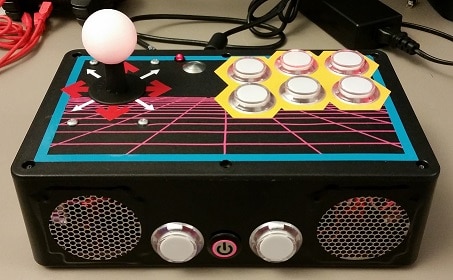Arduino vs. Raspberry Pi What’s the Difference?
2024-04-16 | By bekathwia
Today we’re learning the difference between microcontrollers and single-board computers or SBCs. It’s common for beginners to ask, “Which processor type is right for a particular DIY electronics project, Arduino or Raspberry Pi?” This article will answer that question and explain the difference between the two using plenty of examples.

The short answer is that Raspberry Pi and other single-board computers are akin to the computer in your touchscreen phone or tablet, and the Arduino and other microcontrollers are akin to the computer in your coffee machine or a kids’ toy. Single-board computers have processing power that is two orders of magnitude larger than that of most microcontrollers.
Microcontrollers are single-threaded processors, which means they can only do one thing at a time; they can’t multitask. They’re not as powerful as computers, but they don’t have to be. Microcontrollers are purpose-built to handle real-time operations and they’re great at it. Arduino is just one microcontroller platform, but it is a very popular one for hobbyists.
Likewise, Raspberry Pi isn’t the only single-board computer, just the most famous one. The more complex circuitry is capable of running a full-on operating system. The OS manages the applications running concurrently on the system, interfacing with the user, file management, etcetera. You’ve likely heard of operating systems like Microsoft Windows, macOS, Linux, iOS, and Android.
Generally, single-board computers are great for projects that need to drive video displays, playback audio, and listen for user input all at the same time. For instance, a mini arcade cabinet is a popular Raspberry Pi project, where you need the display to update and the input controls to be registered fast enough to play the games on a console emulator that is also running in the background.
By contrast, smaller, battery-powered devices that have simpler or zero graphics are better off with microcontrollers. An Arduino can run one simple game; a Raspberry Pi can emulate each of your favorite gaming systems and all the games that run on them.

Both have digital GPIO pins, but if you want to use analog inputs, consider a microcontroller first. Raspberry Pi’s inputs are only digital, so you’d need additional hardware for interfacing with analog inputs. For instance, my webcam privacy project uses a potentiometer, a button, and a micro servo, so a low-cost microcontroller is the best option. Anything more would be overkill.
It's not about which one is better, but which one is more suited to your specific project, budget, and also your prior experience. For instance, if you’re already a Linux systems administrator, I would encourage you to use your existing software skills to build rad Raspberry Pi projects and gradually add more electronics. If you are new to programming or working with kids, you might prefer one of the blocks coding compatible microcontroller boards out there like Micro:bit and Circuit Playground.
It’s easiest to highlight the most extreme differences between these various hardware approaches but to be honest, the overlap area between the two has never been larger. If you saw my previous episode, you know there are sophisticated sensor modules that can take on some complex computing these days, leaving only the output functions for your microcontroller.

To make things even more confusing, Raspberry Pi has made a microcontroller: the RP2040 aka Raspberry Pi Pico. And lots of other microcontroller brands have made boards using the RP2040, including Arduino.
So here are some examples to help demonstrate the difference.
Controlling LEDs and not a whole lot else? Microcontroller.
Smart mirror? SBC.
Web server? Until recently, only computers, but some wifi microcontrollers like the ESP32 can also do some sophisticated web stuff these days, like report your weather station sensor values to the cloud.
A weather station is a use case where either a computer or a microcontroller could do the job, depending on the specific features you want and what seems most approachable to you.

Computers generally use more power than microcontrollers, so if battery power is important to you, that fact may influence your decision to use one over the other. Raspberry Pi wants a steady and beefy USB power supply to keep itself running, while Arduino boards can be far more flexible with their power requirements and draw much less current for the main included components than a full computer does. You might also consider the available online community resources for the project you are trying to build. Finding an open-source library for that specific API you want to use might influence you to use the platform that supports it.

To help you decide, make a list of the features for your project idea, research each one, and then look at your results to help you decide which type of hardware you will proceed with to build your project, knowing there is plenty of support for whichever you choose.

Have questions or comments? Continue the conversation on TechForum, DigiKey's online community and technical resource.
Visit TechForum






















 中国
中国